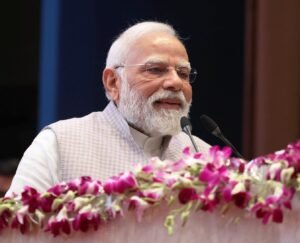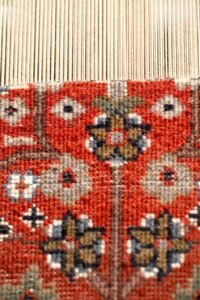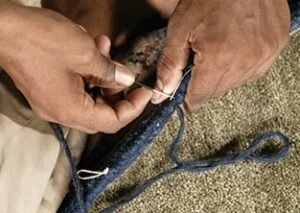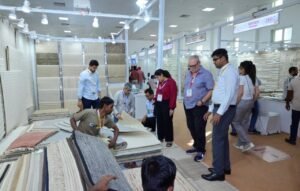Govt announces interest equalisation scheme to boost exports
 In a bid to arrest the decline in exports , the Central government has announced an interest equalisation scheme on pre and post shipment rupee export credit with effect from 1st April, 2015 for five years.
In a bid to arrest the decline in exports , the Central government has announced an interest equalisation scheme on pre and post shipment rupee export credit with effect from 1st April, 2015 for five years.The rate of interest equalisation would be 3 per cent. The scheme would be available to all exports made by small and medium scale enterprises across 416 tariff lines. Merchant exporters will not be eligible for the sop.
The scheme covers mostly labour intensive and employment generating sectors like processed agriculture/food items, handicrafts, handmade carpet (including silk), handloom products, coir and coir manufactures, jute raw and yarn, readymade garments etc. Fabrics of all types, toys, sports goods, paper and stationary, cosmetics and toiletries, leather goods and footwear, ceramics and allied products, glass and glassware are also included. Medical and scientific instruments, optical frames, lenses, sunglasses, auto components industrial machinery, electrical and engineering items, manufactured by SMEs are also covered.
According to an official press release, the scheme is expected to cost the government at least Rs 2,500 crore annually. The actual financial outgo, though, would depend on the level of exports and the claims filed by the exporters with the banks.
Funds to the tune of Rs 1,625 crore would be made available to RBI during 2015/16, the commerce ministry states.
Terming it as a long-awaited announcement, S.C. Ralhan, President, Federation of Indian Exporters Organisation (FIEO), said the scheme would provide stability and help exporters factor the same in their pricing to become more competitive. “Credit cost has become all the more important as the cycle of exports has elongated due to global contraction in demand and liquidity forcing the exporters to borrow for longer periods,” he said.
The scheme will be evaluated after three years.
While it will be funded from the funds available with Department of Commerce under non-plan head during 2015/16, the restructured scheme would be funded from plan side from 2016/17 onwards.
The scheme was earlier called Interest Subvention Scheme.
New Delhi, Nov 18 (KNN) In a major boost to the MSME exporters, the Cabinet Committee on Economic Affairs has approved for Interest Equalisation Scheme (earlier called Interest Subvention Scheme) on Pre & Post Shipment Rupee Export Credit with effect from 1st April, 2015 for five years.
The scheme will help the identified export sectors to be internationally competitive and achieve higher level of export performance.
The scheme will be evaluated after three years.
The rate of interest equalisation under the scheme would be 3 percent. The scheme would be available to all exports of MSME and 416 tariff lines. Scheme would not be available to merchant exporters.
The duration of the scheme would be five years with effect from April 1, 2015. The scheme would be funded from the funds available with Department of Commerce under non-plan during 2015-16 and the restructured scheme would be funded from plan side from 2016-17 onwards.
“Ministry of Commerce & Industry may place funds in advance with RBI for requirement of one month and reimbursement can be made on a monthly basis through a revolving fund system,” said a Cabinet release.
On completion of three years of operation of the scheme, Department of Commerce may initiate a study on impact of the scheme on export promotion and its further continuation. The study may be done through one of the IIMs. The operational instructions of the scheme would be issued by RBI.
Financial implication of the proposed scheme is estimated to be in the range of Rs. 2500 crore to Rs. 2700 crore per year. However, the actual financial implication would depend on the level of exports and the claims filed by the exporters with the banks. Funds to the tune of Rs. 1625 crore under Non-plan Head of account are available under Demand of Grants for 2015-2016, which would be made available to RBI during 2015-16.
The scheme covers mostly labour intensive and employment generating sectors like processed agriculture/food items, handicrafts, handmade carpet (including silk), handloom products, coir and coir manufactures, jute raw and yarn and other jute manufactures, readymade garments and made ups covered under Chapter 61-63, fabrics of all types, toys, sports goods, paper and stationary, Cosmetics and Toiletries, Leather Goods and footwear, Ceramics and Allied Products, Glass and Glassware, Medical and Scientific Instruments, Optical Frames, Lenses, Sunglasses Etc., Auto Components/Parts, Bicycle & Parts, Articles of Iron or Steel (Notified lines), Misc. Articles of base metals (Notified lines), Industrial Machinery, Electrical and Engineering items, 1C Engine, Machine tools, Parts (Notified lines), Electrical Machinery and Equipment (Notified lines), Telecom Instruments (Notified lines) and all items manufactured by SMEs other than those covered above
The scheme will help the identified export sectors to be internationally competitive and achieve higher level of export performance.
The scheme will be evaluated after three years.
The rate of interest equalisation under the scheme would be 3 percent. The scheme would be available to all exports of MSME and 416 tariff lines. Scheme would not be available to merchant exporters.
The duration of the scheme would be five years with effect from April 1, 2015. The scheme would be funded from the funds available with Department of Commerce under non-plan during 2015-16 and the restructured scheme would be funded from plan side from 2016-17 onwards.
“Ministry of Commerce & Industry may place funds in advance with RBI for requirement of one month and reimbursement can be made on a monthly basis through a revolving fund system,” said a Cabinet release.
On completion of three years of operation of the scheme, Department of Commerce may initiate a study on impact of the scheme on export promotion and its further continuation. The study may be done through one of the IIMs. The operational instructions of the scheme would be issued by RBI.
Financial implication of the proposed scheme is estimated to be in the range of Rs. 2500 crore to Rs. 2700 crore per year. However, the actual financial implication would depend on the level of exports and the claims filed by the exporters with the banks. Funds to the tune of Rs. 1625 crore under Non-plan Head of account are available under Demand of Grants for 2015-2016, which would be made available to RBI during 2015-16.
The scheme covers mostly labour intensive and employment generating sectors like processed agriculture/food items, handicrafts, handmade carpet (including silk), handloom products, coir and coir manufactures, jute raw and yarn and other jute manufactures, readymade garments and made ups covered under Chapter 61-63, fabrics of all types, toys, sports goods, paper and stationary, Cosmetics and Toiletries, Leather Goods and footwear, Ceramics and Allied Products, Glass and Glassware, Medical and Scientific Instruments, Optical Frames, Lenses, Sunglasses Etc., Auto Components/Parts, Bicycle & Parts, Articles of Iron or Steel (Notified lines), Misc. Articles of base metals (Notified lines), Industrial Machinery, Electrical and Engineering items, 1C Engine, Machine tools, Parts (Notified lines), Electrical Machinery and Equipment (Notified lines), Telecom Instruments (Notified lines) and all items manufactured by SMEs other than those covered above






